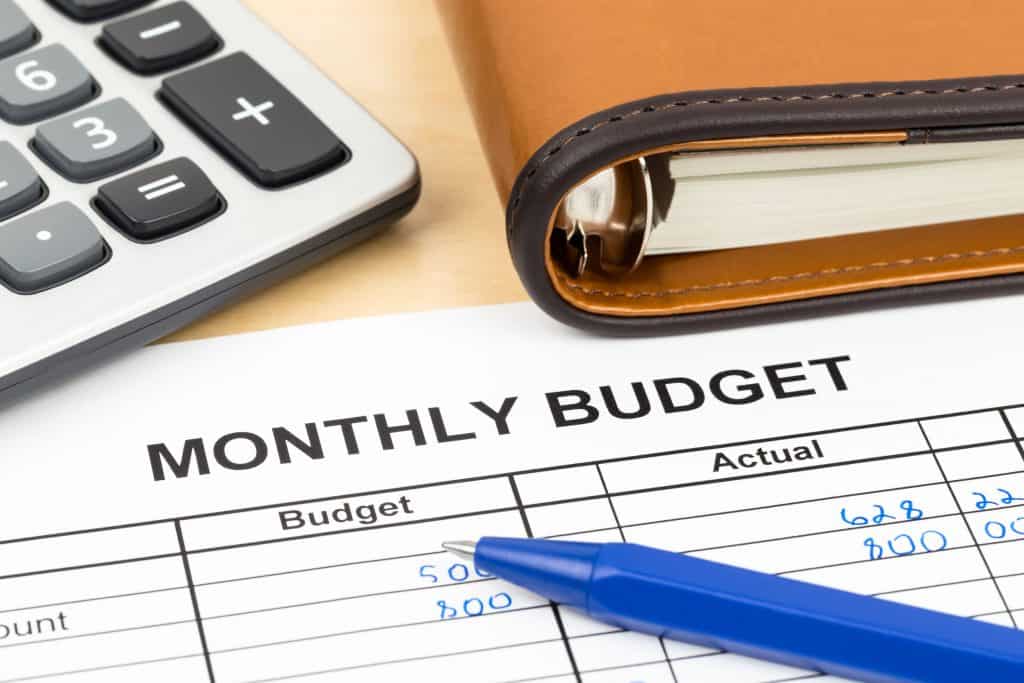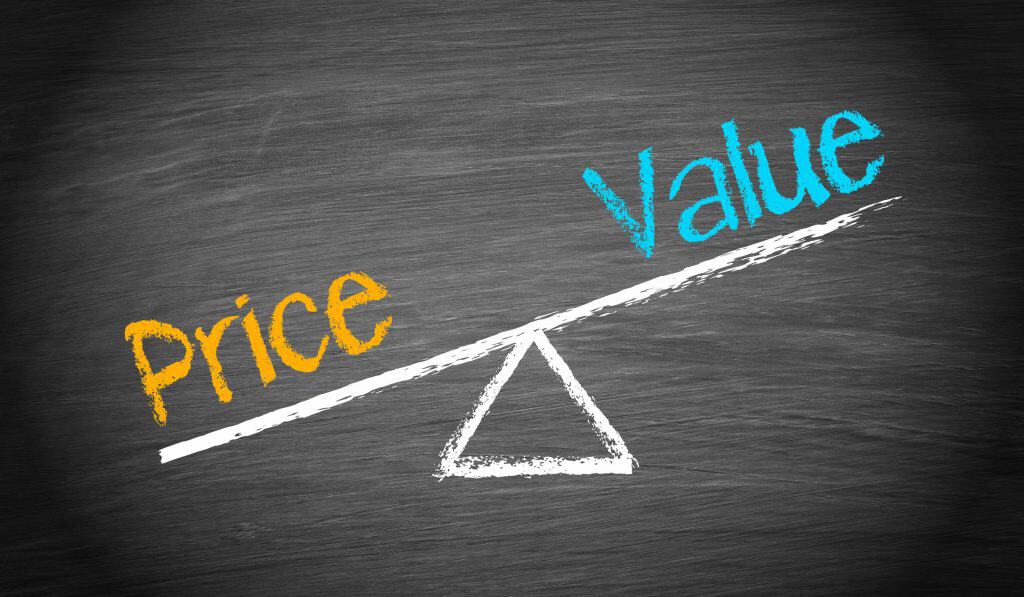
A bass boat is a big-time angler purchase. Unfortunately, that means that it’s also often a big buck purchase as well. Not all bass anglers have a couple extra ten thousand dollars lying around waiting to be used for your dream boat. More realistically, a bass boat is something that you’ve been dreaming for and saving for, for years.
Thankfully, there are things that we can do in order to go easy on the wallet as well as obtain that dreamboat sooner rather than later. In light of this, I have gathered fifteen of the top effective tips for financing your dream bass boat.
- Evaluate Financial Situation
- Compare Options
- Determine Loan Type
- Pre-Approval
- Application and Negotiation
- Down Payment
- Make an Offer that Fits Budget
- Secure Price with Lender
- Marine Survey
- Closing and Funding
- Refinancing
- Used Vs. New
- Quicker IS Better
- Interest Rates
- Plastic Won’t Cut It
Is Financing Right for You?
Wherever you turn in the angling community, someone will have an opinion on financing, but one thing everyone can agree on is that financing should never be done without intensive research, hunting, and planning.
On many bass fishing forums such as Bass Resource, many anglers claim that financing is the devil and that people should just save up for the boat they want. One angler known as Crappiebasser claims the following.
“[It’s] not smart to go into debt for anything that depreciates. Save your money until you can buy what you want.”
Crappiebasser
Yet another angler on this forum made the following comment on financing a boat.
“I’d rather have a 6-10k boat paid for in cash than a 20k boat loan.”
iabass8
While that may be what’s best for him as an angler, some anglers may still need to finance for a boat worth 6 to 10 thousand. Others may want a boat worth more than 20,000, but not have the ability to spend that much all at one time. Whatever your situation or circumstances, be sure to find out what you want or need.
What’s Right for You?
There are many pros and cons to financing your boat. Overall, it’s pretty balanced between bad and good, the important thing is to make your own pro and con list in order to find which side it weighs on more heavily for you. For some, it may benefit to pay upfront. For the rest of us, financing is a helpful tool in getting your boat and still maintaining a decent financial status.
| Financing Pros | Financing Cons |
| With fixed-rate loans, monthly payment is predictable. | Variable interest rate loans can sabotage and blindside your budget. |
| A definite date of when it will be paid. | An unsecured loan may cost more than those using boat or house as collateral. |
| If payments are paid on time, financing can build credit. | Subprime boat loans can have interest rates reaching into the double digits. |
| The boat can be used as collateral. | Hefty loan payments can tie up savings and reserves. |
| It makes your dream boat more affordable. | With your boat or home as collateral, you risk losing either one if not paid. |
1. Evaluate Financial Situation

Before any major financial purchase, it is essential to assess your financial situation. And before you decide to finance or not, there are several things that need to be decided, one of those being if you can even afford a boat right now.
This can be extremely hard, as our emotions and desires can often get in the way of logic and reason. We may be looking at our dream boat and imagining all of the adventures awaiting us out on the water, but now is no time for that. Now is the time to look at our budgets, financial statements, and debt with a logical eye.
It may even be a good idea to get the opinion of a professional financial advisor. This perspective from someone who is good with money and has no emotion tied to this decision, they would be able to steer you in a financially smart direction.
- Check Credit History
- Don’t pull your credit score, because as you’re trying to finance, lenders and dealers will be pulling your score. If you do need your credit score, find a way to check it without it being detrimental to your score.
- Check your history and understand where you’re standing.
- Verify income and assess budget.
- Estimate down payment, monthly payments, and other financing costs.
- Estimate insurance, registration, maintenance, storage and other costs that will arise after you obtain the boat.
- Set limits.
- Set the ideal cost you’d want to pay.
- Set the cost you won’t go above.
- Formula Boats suggests to outline monthly and yearly specifics of what you’ll be paying (including down payment, interest rates, monthly payments, etc.)
2. Compare Options
After you’ve planned out your financial situation, it’s important to find the best option for you. The options may be overwhelming, but here we’ll go through each option and talk about some of the benefits and drawbacks of each option.
It’s crucial to go through and find all of your options and compare them. With a big purchase, it’s important to find what will work best for you. In order to finance your boat, you need to find a loan. So it’s important to look at your options of loans. There are many places that offer loans that you can compare. When looking at the different options the following needs to be compared.
- interest rates
- years allotted for financing the boat
- read the fine print
- see if there is a minimum credit score is required
- loan period
- boat age restrictions
Personal Loan
| Personal Loan Pros | Personal Loan Cons |
| No Collateral | Higher Interest Rate |
This is a great option that allows you to get a loan without having to put up anything for collateral. These personal loans can be obtained from your bank, but you have to have good credit. With the good credit, banks allow you to take the money without having to hold something of yours as you’ve built trust with them and the federal credit bureau.
According to Boats.com, most banks will require at least 10 to 15 percent down payment when purchasing a boat. The interest rates on personal loans will vary between different banks and different credit scores, so it’s important to do research to find the best option.
Boat Dealer
Most boat dealers have lots of experience with financing for people who are buying boats. They have great competitive rates, but it’s important when working with the dealer to read the fine print carefully because you can easily find a great deal or a really bad deal.
Home Equity Loan
| Home Equity Loan Pros | Home Equity Loan Cons |
| low home loan interest rates | may need to pay for an appraisal |
| payments are tax-deductible | you have to pay closing costs |
| home is collateral, so default on loan means possible foreclosure on your home |
Home equity loans are great for many reasons, but one of the best in the interest rates are much lower than most other places you can take a loan. Another great benefit of home equity loans is that they are tax-deductible!
Collateral Loan
Collateral loans often have better interest rates, because the collateral proves as more incentive for people to pay their loan payments on time. These loans are very similar to car loans. With car loans, the car as collateral. When applied to boats, a collateral loan uses the boat as collateral. So, if payments aren’t made, the boat is then taken by the lender and sold.
Credit Union
There are loans available for potential boat owners from different credit unions. They tend to offer a fair interest rate and are a reliable source for a loan.
One website, LOC Federal Credit Union provides a great collection of data that gives some examples of different examples of Boat and RV Loan Interest rates. They do state though that the rate or term of the loan can be affected by one’s credit score.
| Loan Type | Age | Max or Min | Fixed APR As Low As | Term |
| New/Used Boat | 2015-2019 | 4.24% | up to 60 months | |
| New/Used Boat | 2015-2019 | $10,000 min | 4.24% | up to 84 months |
| New/Used Boat | 2015-2019 | $35,000 min | 4.99% | up to 180 months |
| Used Boat | 2010-2014 | 4.49% | up to 60 months | |
| Used Boat | 2010-2014 | $10,000 min | 4.49% | up to 84 months |
| Used Boat | 2010-2014 | $35,000 min | 5.24% | up to 180 months |
| Used Boat | 2009 & older | 5.99% | up to 60 months | |
| Used Boat | 2009 & older | $10,000 min | 5.99% | up to 84 months |
| Used Boat | 2009 & older | $35,000 min | 6.74% | up to 180 months |
How to Choose

Doing your research pays off because you can find places such as Angler Choice Marine. This is one example of a lender option that makes financing your boat as painless as possible by providing competitive rates, a simple application process, flexible down payment options, free quality inspection, don’t require great credit, and they take care of registration, title, tags, and taxes.
Another great option is to use Marine Lenders through NMLA (National Marine Lenders Association). This is a national association that makes boating more affordable to the common angler by helping people to finance their boats.
When looking at all the different details, a great website to use to compare the rates and costs of each possible lender is the Boat Loan Calculator. It takes the loan amount and allows you to choose a loan term, and interest rate, and it calculates your estimated monthly payment.
3. Determine Loan Type
Beyond who you’re going to lend from, you need to decide what kind of loan will be the best for you to take out for your boat. There are three main types of loans, and each one is going to have different personal benefits or drawbacks.
Variable-Rate Loan
A variable-rate loan is a loan in which the interest rate will change over the course of the loan. At the beginning of the loan, the interest rate is almost always going to be one of the lowest interest rates when compared to the other types of loans. It starts out low, which draws people in. But, then it can grow large and sink people.
If taking in this kind of loan it is important to be aware of what the variables are in how the interest rate will change. This way you are not blindsided by fees and costs.
Fixed-Rate, Fixed-Term, Simple-Interest
This loan will have a higher interest rate starting out, but that interest rate will never change. The monthly rate, the term of the loan and the interest rate all are decided before the loan is taken out, and doesn’t change over the course of the loan.
This takes away any chance for any unhappy surprises or shocks and keeps the amount of money owed stable. This can be very beneficial for those who don’t have room in their budget for any surprises.
Balloon Payment Loan
A balloon payment loan sets a specific term for the loan. The borrower is then expected to pay the full amount of the loan out by the end of that specific term.
4. Pre-Approval
Pre-approval is a great option when applying for a boat loan. Although this adds additional paperwork to the stack, it is not as much paperwork as the application process. The little bit of extra paperwork is worth it because pre-approval is very beneficial for both the lender and the borrower.
So, pre-approval is a letter to the dealer or seller of the boat from the lender stating you are good for the money. It states the amount of money that is cautiously approved. When this letter is shown to the dealer or seller, they know that you are good and able to provide the money. This allows them to take you more seriously, and they then have more trust in you and your ability to pay. Along with this, it also gives you some assurance, as you know how much someone is offering to pay you.
What You’ll Probably Need for Pre-Approval
- previous year’s tax return
- credit report
- other financial statements
5. Application and Negotiation
The application and negotiation are then where the deal goes down and you become a boat owner. When going into this process, one needs to be prepared to stand strong, speak your desires, and be prepared for a lot of paperwork. To be prepared for the application and all the paperwork, there are a few things that one needs to bring to the negotiation.
What You Need
- Information and confirmation concerning employment.
- Personal finance statement including assets and liabilities.
- Information on the boat you want to purchase.
After applying and negotiating for a loan, many professionals and other boat owners state that it usually takes about a week or so for the lender to get back to you on their decision.
6. Down Payment

Many times dealers or sellers will expect you or ask you to put down a down payment on the boat. Even if you can’t save up for the entire cost of the boat, it’s important to at least save up for the amount that the down payment will be.
It’s also incredibly important to know the specific details of the down payment. Some of those things that we need to know and do are as follows according to Formula Boats.
- Is the down payment refundable if you fail to secure a loan?
- I the down payment refundable if you decide to not purchase the boat?
- Obtain a receipt for the down payment on the boat.
- Obtain an outline of the rules and terms of the down payment.
7. Make an Offer that Fits Budget
As briefly stated earlier, making a budget before looking at financing a boat (or anything for that matters) is incredibly important. Especially when it comes to something that you’ll have to worry and fret about the next several years as you continue to pay off.
When looking at what your offer can be on the boat of your dreams, you need to dissect the amount to see how much you can afford each month, how much leeway you have, and how much would need to be available every month for the lender.
Although it may be disappointing if you find that there just isn’t enough in the budget for a down payment, application fees, and other various expenses that come with financing a boat. It is better to save forward a little more money. Jumping at the lowest down payment, lowest interest rate, and the biggest rate job can often lead to more debt and frustration than anything else.
Here’s a piece of advice from a boat lender. To make a fair offer, you first need to know the value of the boat in question. Looking up the value of the boat is as easy as going to the NADA.com website.
8. Secure Price with Lender
After going through your budget and deciding on an amount that you can swing with your budget, it is the time to secure that amount with the lender that you have chosen. Take your price, amount and rates to the lender and negotiate an agreement.
Although the lender may request, or even demand that some changes to your ideal, that can happen. Stand firm, and push your ideal amount, but also understand that sometimes life is life, and not everything works out. Have a backup price range in mind when going to secure the price with the lender. That way when things aren’t going your way, you still have a range of prices that can work with your needs and schedule. This way you don’t feel like you’ve given anything up.
9. Marine Survey
Be prepared for the fact that the lender that you are getting the loan from most likely will require a marine survey. A marine survey is similar to getting a home inspected before it is sold. During the survey, they check to see if the boat is up & running. They make sure to investigate any problems and make sure that it is safe and seaworthy.
While they check the safety of the boat, they also check to see if the boat is worth the asking price the seller or dealer are asking for. If your lender seems to be skipping or forgetting this step, make sure to remind them. It’s important that your boat is inspected and checked before you go spend hundreds of bucks on something that may not be safe or worth the price.
10. Closing and Funding
After the marine survey is completed, and everyone agrees on the price and safety of the boat, the deal is closed. The seller will choose a closing date. On closing day, some dues and fees must be paid, and the last bit of the paperwork will be finished up. What a relief signing those papers, watching them get notarized, and knowing that at the end of all the signing is your very own boat!
These last pieces of paperwork will need to be official, so when buying from a personal seller, escrow services will need to be obtained. There are third-party escrow services that are available when the seller is private or if an extra safety or assurance is desired. These services help the two parties to come to agree to the terms of the closing paperwork.
Through many services, the boat is actually released to you before everything is final. You then have a limited agreed upon amount of time to get acquainted with the boat before everything is locked and closed. Then after that limit of time, and you still want the boat, the service is notified and they put the money through to the seller.
11. Refinancing

Even after so much time and research, things can change. Sometimes people decide on a lender or loan expecting a certain steady income, and then sometimes those incomes lessen or disappear. In the money world, things always seem to be changing. Fortunately, that also means that even if things start to go poorly for you after you’ve already been financing your boat, things can be refinanced.
Of course, there are some situations that can’t be refinanced. But, many can. If you can’t seem to be making the monthly costs or interest rates of your current loan, there is often the opportunities to refinance. What this does is move things around in the loan agreement that allows the borrowers to have lower rates again.
Refinancing though is basically starting a new loan, so if choosing to refinance, it’s essential to make sure that the loan type, terms, and rules are the same as your original loan. Otherwise, you can be stuck with even more hidden fees and costs, sinking you even further.
12. Used vs. New
As seen in the table under the credit union section, there can be some major differences between used boats and new boats when trying to finance. It is often much easier to find financing options for new boats. According to Formula Boats, it is much easier to find financing for boats that were made in the last 15 models years.
According to Bass Boat Ads, used boats often have a higher interest rate with certain lenders. This is often because they already start out old, so the longer someone spends paying it off, the older it gets, which means its value is depreciating at a faster rate than a new boat. New boats often even have zero down payment.
This difference between used and new, when it comes to financing, isn’t saying that you should directly get a new boat and leave the older ones in the dust. Rather, it means if an older boat is the better option for you, it may cost less money and hassle in the long run if you save up and bought it, rather than trying to finance it. Those interest rates can really bite you in the tush.
13. Quicker IS Better
Experts say that the faster a loan is paid off the better. especially with something like a boat that depreciates. It loses it’s value incredibly quickly. So, the faster a loan for a boat is paid off, the less money you waste or pay.
Paying off the loan quickly also reduces the money spent on late fees, increased interest, etc. Many anglers state that 5 years is a good goal of when to have a boat loan paid off. Obviously, some more expensive boats will take longer than 5 years, but it should be kept as close to 5 years as possible.
On the Texas Fishing Forum, on angler named Dargar replied to another anglers question, “How long is too long to finance a Bassboat?” Dargar replied with the following.
“My boat was [$]30,000 financed over 5 yrs and paid $534.”
Dargar
This, of course, isn’t an exact formula. These rates and prices can change with boat price, condition, buyer’s credit score, lender and seller. IT is a good example to look at and see what others have done.
14. Interest Rates

Interest rates are something that one has to be very cautious and aware of. It can be easy to get ripped off with certain dealers and their rates. It can be a good idea to check out what other anglers in your area or same situation think.
One example of that is on the Bass Resource forum. One angler who is a member of the forum was asking what his fellow bass anglers thought of his situation. He wrote the following about the interest he was offered when looking to take out $ 20,000.
“My bank offered me 11.25% interest. My local credit union offered 15.07%! I’m comfertable about up to about 7%. I’m not paying that and I don’t have the cash. What are my other options? Has anyone financed an older boat for under 5% fixed? How?”
Megastink
Everyone on the forum was shocked and disgusted at those rates. The consensus between them all was that any interest rate over 7% was obscene. And they suggested if Megastink couldn’t find a reasonable interest rate to just save up for the boat he wants.
While most may state that anything over 7% is ridiculous, this might be the reality for those whose credit score isn’t so good. But, in those situations, financing may not be the right option for them. Those interest rates would make the loan cost much more than it could ever be worth.
15. Plastic Won’t Cut It
As one last piece of advice, credit cards shouldn’t even be considered as an option for paying for a boat. The interest rates on credit cards often are astronomical. It’s not worth it. If a loan doesn’t seem to be working out, it unfortunately often means that it’s not the right time to be getting a boat. RAther. It’s better to start saving up small.
Getting into debt on a boat with a credit card, the rates and costs would be unacceptable, dragging you into very deep debt.
Hopefully, these tips and steps have helped you to start making a plan of how to finance your dream boat! Happy fishing and happy financing!
